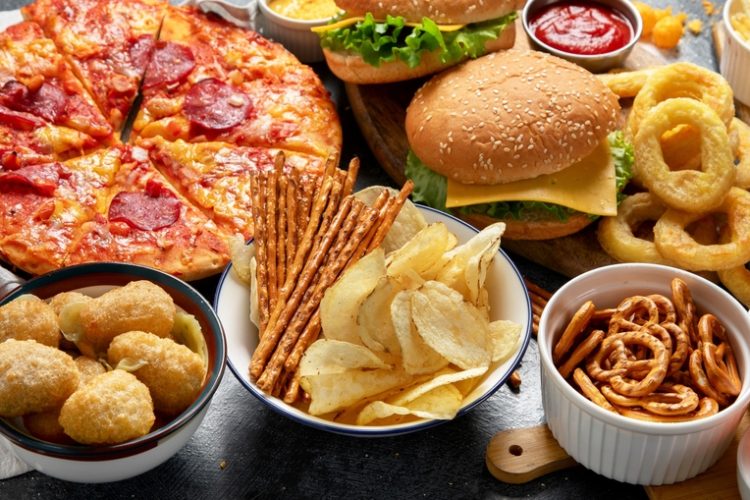Ultra-processed foods: what everyone’s missing
Posted: 8 May 2025 | Steve Bennett | No comments yet
Health activist Steve Bennett unites the puzzle pieces to reveal why ultra-processed foods are so damaging to health. Suggesting sensible steps for manufacturers and consumers alike, he relates how we can regain control of our diets and live healthier lives.


A major new study published in the American Journal of Preventive Medicine delivers alarming evidence about ultra-processed foods (UPFs): for every 10 percent increase in UPFs as a share of total daily calories, the risk of all-cause mortality rises by 2.7–3 percent.
The evidence speaks for itself, and making changes now will save a lot of lives…
In the US alone, where UPFs account for over half of the average daily energy intake, this translates to more than 124,000 preventable premature deaths each year – up to 14 percent of all early deaths.
This comprehensive research, which analysed dietary and mortality data from eight countries including the UK, US and Australia, also linked UPF consumption to 32 different adverse health outcomes, including cardiovascular disease, diabetes, obesity, certain cancers and depression.
The study confirms what many of us in the health research field have long known, but the scale is significant. While most discussions about UPFs focus on vague concerns about ‘processing,’ there are three specific factors related to this class of product that directly impact our metabolic health.
Hidden sugars
Your entire bloodstream – all five litres of it – is designed to carry just one teaspoon of sugar. Not one teaspoon per meal or per hour, but one teaspoon total. Yet a single serving of many breakfast cereals can flood your system with the equivalent of 8-10 teaspoons.
This creates an emergency response, as the body must rapidly clear this excess sugar from the bloodstream. This comes in the form of an insulin spike to remove the excess, and over time, this emergency response becomes less effective, leading to insulin resistance – the precursor to type 2 diabetes and numerous other chronic conditions.
What is particularly concerning, is how this sugar hides in products marketed as healthy. Supposedly ‘balanced’ convenience meals can also trigger blood sugar responses equivalent to consuming 15-20 teaspoons of table sugar (sucrose).
The taste bud trio
In nature, you rarely find carbohydrates and fats together in significant amounts in a single food. Meat has fat, but no carbs. Fruit has carbs, but minimal fat. And natural foods containing both rarely have significant levels of salt. This separation is how our bodies evolved to regulate appetite.
However, UPFs disrupt this balance by combining all three nutrients – sugar, fat and salt – in ratios that override the body’s satiety signals and trigger dopamine-driven reward circuits.
Many food manufacturers have optimised this combination to reach a ‘bliss point’ – the ratio that tends to trigger maximum cravings without overwhelming taste receptors. They are engineered to encourage repeat consumption and drive addiction.
Research has also shown that this combination activates the same brain reward pathways as addictive drugs, making it extraordinarily difficult for consumers to moderate their intake solely through willpower.
The systematic removal of fibre
The most damaging aspect of UPFs – and the most overlooked – is the systematic removal of fibre.
Nature always packages carbohydrates with fibre for a reason as it acts as the body’s natural brake pedal for sugar absorption. When you consume carbohydrates with their fibre intact, your body can handle them properly.
Yet food manufacturers strip out this crucial ingredient, leaving you with the impact of the sugar but none of the protection.
Without fibre, carbohydrates convert to blood sugar in minutes rather than hours, triggering rapid insulin spikes followed by energy crashes that set up a cycle of cravings and overconsumption.
Fibre may be removed for three reasons: firstly, because it extends shelf life; secondly, because it allows for faster consumption and drives UPF addiction; and thirdly, because it confuses your body’s natural ‘I’m full’ signals, leading you to eat more.
The solution: what industry and consumers can do
Addressing these three specific issues could transform our food landscape. For manufacturers, this means:
- Honest sugar labelling. Labels should clearly show not just added sugar, but the glycaemic impact of the entire product. Consumers deserve to know that a bowl of refined cereal impacts their blood sugar similarly to consuming 10+ teaspoons of table sugar.
- Break up the taste bud trio. Food developers need to move away from the addictive combination of sugar, fat and salt. This doesn’t mean food can’t be delicious – many of the world’s finest cuisines achieve remarkable flavour without relying on this manipulative combination.
- Keep or reintroduce fibre. Most importantly, fibre that naturally occurs with carbohydrates should not be removed. Rather than stripping fibre out, companies should explore innovative ways to maintain or add fibre back into products.
Consumers should look to start their meals with fibre-rich foods to create a physical barrier that slows the absorption of any sugars that follow. Fibre should be thought of as your metabolic seatbelt – it doesn’t prevent the journey, but it makes it far safer.
The path forwards
With the American Journal of Preventive Medicine study clearly linking UPFs to premature death and 32 different adverse health outcomes, the authors themselves are calling for “regulatory and fiscal policies to encourage healthier diets based on fresh and minimally processed foods.”
Those companies that address these three specific problems – excessive sugar, the addictive taste bud trio and fibre removal – will be better positioned as consumer awareness grows.
When research identifies links to 124,000 preventable deaths annually in the US alone, this moves the dangers of UPFs beyond the realm of debate. The evidence speaks for itself, and making changes now will save a lot of lives.
Meet the author


Qualified Health Coach, Steve Bennett, is on a mission to tackle the UK’s obesity crisis including collaborating with the Food, Diet, and Obesity Committee at The House of Lords to introduce tougher regulations on food labelling and marketing.
He is the author of several health books, including Primal Cure, Britain is Sick, Primal Gourmet, Fat & Furious, and Fibre First.
He is a patron and benefactor to the Public Health Collaboration, which aims to put prevention at the heart of the nation’s healthcare system. The charity has recently taken part launching a revolutionary healthcare education programme to around 30 schools across the UK called the ‘Real Food Rebellion’.
Steve focuses his philanthropic efforts and funding on catalytic health education, backing organisations with the potential to deliver disproportionately high impact. This is why the Bennett Foundation also supports ACE Africa and the charity BIG CHANGE.
Related topics
Fats & oils, Health & Nutrition, Obesity, The consumer, World Food









